Leave all the guessing to your competitors. Sales and demand forecasting for fashion retailers is a matter of collecting data and building prediction models based on it.
Online business and eCommerce have become one of the covid-19 retail trends. Store owners, product managers, and fashion merchants often turn to the latest machine learning techniques and learn how to apply artificial intelligence in retail industry to predict sales, optimize operations, and increase revenue. But machine learning requires the right data. The good news is that today, there’s more than enough data available. Social media platforms, eCommerce platforms, and trackable supply chains all empower fashion brands to grasp the latest fashion trends and embrace people’s desires to find the next business opportunity.
In this article, you’ll learn:
- What is sales prediction in fashion retail?
- Why and when do fashion retailers need to forecast sales?
- How to forecast sales to launch a new product
- How to use data from social media to analyze fashion trends
- The ugliest mistakes in retail demand forecasting
- How Amazon predicts sales
What is sales forecasting in fashion retail?
Fashion is one of the most volatile industries; it’s difficult to predict. Trends in colors, prints, cuts, patterns, and materials change faster than you can even think of them, making retail forecasting a challenge for established brands and newcomers alike. Not every retailer risks scaling their business — not even all that have bulk production and a large customer base. It takes a lot of money and resources to regroup to catch an evolving fast-fashion trend or prepare to meet seasonal demands. Retailers suffer huge losses from unsold inventory and liquidation costs.
Characteristics of the fashion retail industry
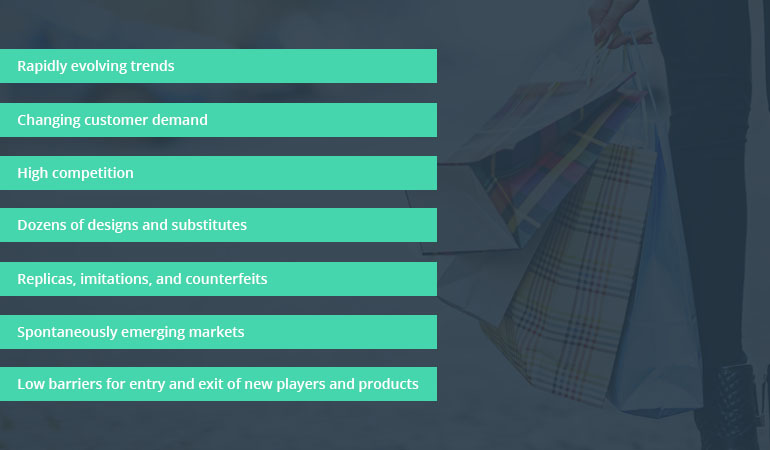
The challenge of sales forecasting for fashion retailing has been taken up by data analysts and machine learning experts, who have come up with ways to predict demand for items based on shopper data, retailer data, supplier data, and market data.
Tech-savvy retailers use big data to follow and predict trends, prepare for customer demand, segment customers, optimize pricing and promotions based on customer preferences, and monitor real-time analytics to track business outcomes.
Big data in fashion retail

Source: Sqream – Big Data Helps Retail Revive
Organizations with above-average performance using customer data and analytics outpace competitors by 2–3x on sales, margins and profit.
Forecasting fashion trends is big business. Companies such as WGSN have trained experts who go through thousands of images, look for patterns, discover color combinations, follow fashion shows, and sort all the data to forecast trends. Collecting a large volume of data gives advantages, but still, it can be overwhelming to choose the exact data you need to make a forecast.
Challenges of fashion retail data: How to identify relevant data?
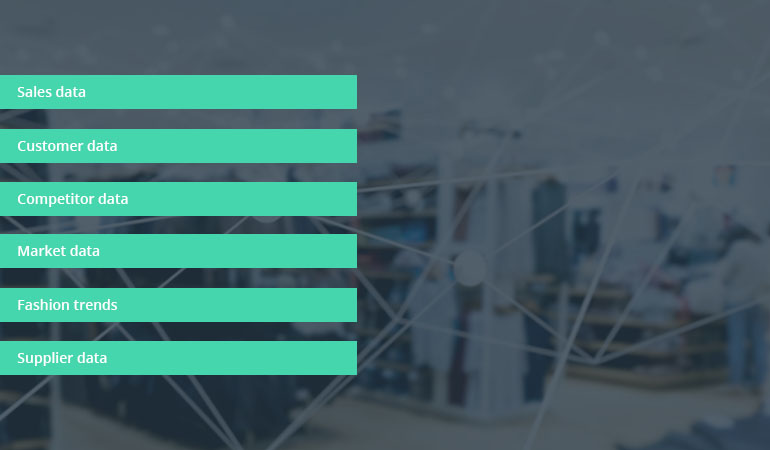
Before starting any demand forecasting in the fashion industry, keep in mind the seven basic statements of fashion:
- Fashion is a social and psychological response. People reveal their inner and social states by wearing particular clothes.
- Fashion is similar to pop culture. It can be extremely frivolous and transient.
- Fashion is the spirit of the time. It reflects historical events and can repeat itself.
- Fashion is an international phenomenon. Designers borrow foreign styles and adopt them while adding their novelties.
- Fashion carries meaning. Designers transfer different meanings through forms and patterns, while customers love to find these hidden meanings.
- Fashion is a big economic accelerator. It drives revenue from people’s desire to associate themselves with new looks.
- Fashion differs by gender. Apparel for men and women isn’t the same.
With this background knowledge, retailers can start demand forecasting in the fashion industry by taking the following steps:
- Research basic facts about past trends and assumptions about future trends.
- Define the reasons for changes in past trends.
- Measure the difference between past predictions and actual consumer behavior.
- Determine possible factors that will affect future trends.
- Apply predictive models and algorithms, considering the accuracy and reliability of previous forecasts.
- Track forecasts continually to reveal causes of apparent deviations from expectations.
- Adjust forecasts where needed and repeat the process with changes based on further research.
Fashion retailers use four main types of models to forecast upcoming demand for their products, each more complex than the previous.
Models to forecast sales and demand in fashion retail
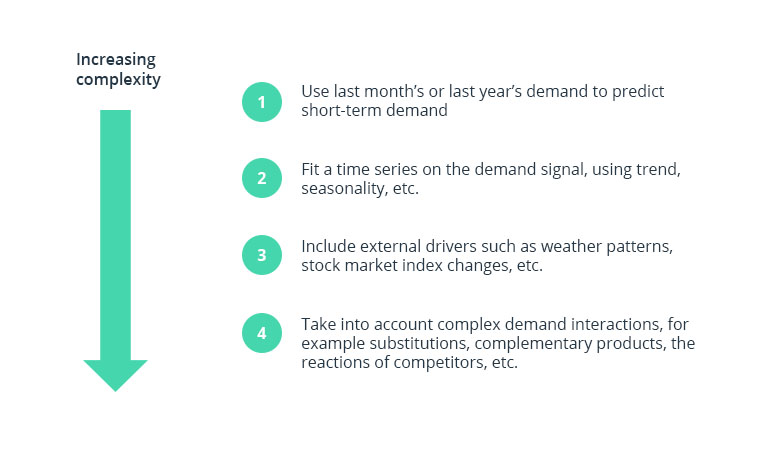
Most mid-sized retail companies are applying the first two methods, while the established brands that are brave enough are implementing the third. Still, very few are actually working on the most complex fourth model, which brings true value to its adherents.
Sales forecasting to launch a new product with the power of AI and machine learning
Artificial intelligence in fashion retail is gaining wild popularity. One of its use cases is demand forecasting. Above, we learned how to choose the data we need to forecast fashion trends and learned about types of models to forecast sales. Now let’s talk about how to apply this data to one of these models.
Let’s start with something relatively simple — forecasting in-store sales of a new product during the first week of its market life based on data from a past product launch. To do this, we can use several common algorithms for time series forecasting.
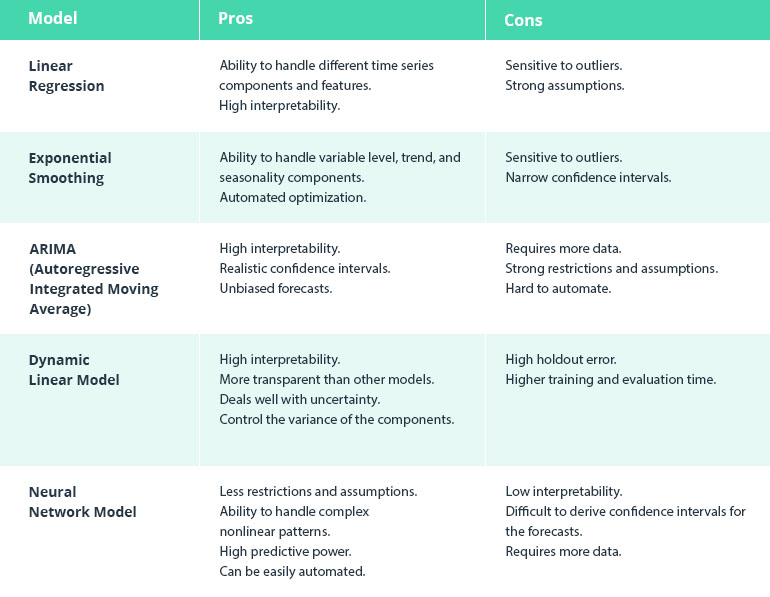
Source: Oracle+Datascience.com
Let’s start by building a neural network. First, we’ll define variables to train retail demand forecasting algorithms. For the input data, we’ll choose sales by months and weekdays and add sales on holidays and during promo campaigns, with previous separated sales on each weekday.
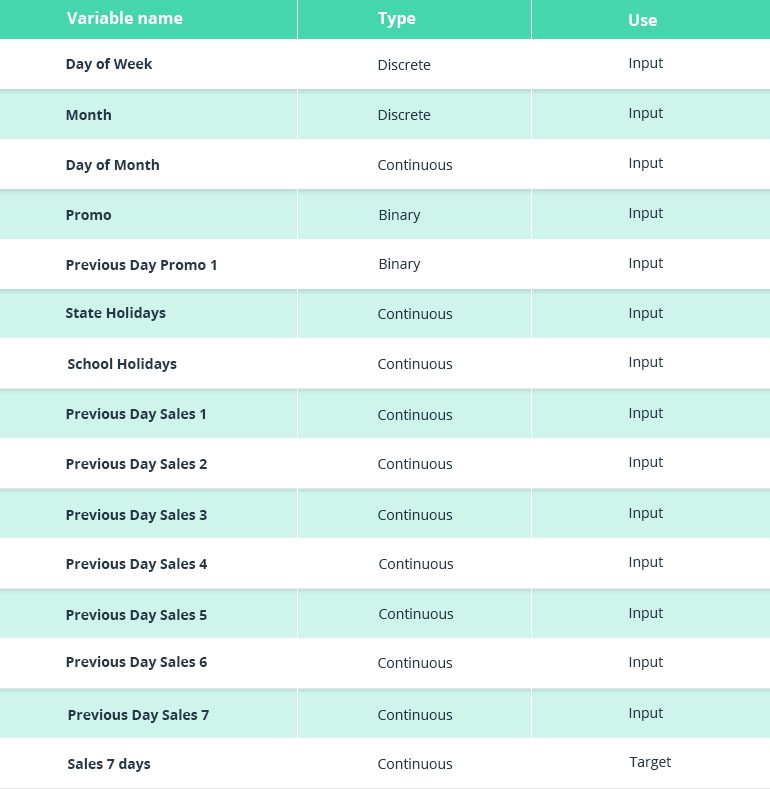
With all the variables we need for training our neural network, we can build a predictive model for sales of our new product in the first seven days.

Before applying the model to predict upcoming sales, we need to test its predictive power on a separate set of data that wasn’t used for training. Let’s test the model against last year’s sales.

We can see that our model’s prediction built on the past year’s data correlates closely with actual sales this year, which means the model should effectively predict our sales during the week of the product launch.
Once we’ve tested our model, we can proceed with creating the forecast for the first week of sales.
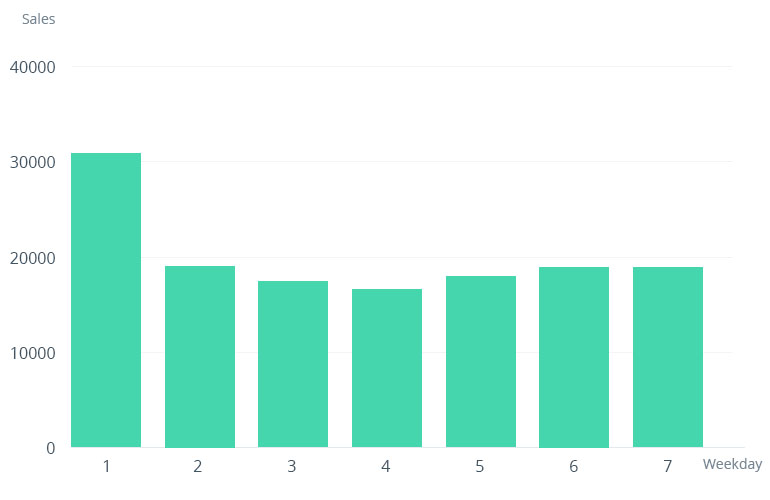
In our model, the first day of the week is Sunday. We see that more sales will be made on this day than on any subsequent day. The number of sales will remain stable during the week, but average weekday sales will be slightly lower compared to sales at the product launch on the weekend.
How to use data from social media to analyze fashion trends
Fashion retailers may access a wide range of customer data from numerous sources, one of them being social media. Facebook, Instagram, Pinterest, and Twitter are oversaturated with data on customer behavior. People put all kinds of data right in the hands of retailers, as social media has become the preferred communication channel between brands and customers. Analyzing which images, colors, and styles get high engagement is one of the retail forecasting methods. Retailers can combine this data with insights from hashtags, geolocations, and followed influencers.
In addition, customer data from platforms like Alibaba and Amazon, analyzed by a suite of powerful tech tools, can open up other powerful possibilities for fashion brands. On top of empowering eCommerce fraud prevention software, AI algorithms can predict upcoming trends that will resonate with each customer group. Simultaneously, AI helps turn large and diverse data sets into rich insights for demand forecasting in supply chains, design and manufacturing, sales, marketing, and customer service across local stores and large warehouses.
The ugliest mistakes in retail demand forecasting
Applied correctly, AI and machine learning techniques can help fashion brands optimize business operations and increase revenue while reducing costs. However, even a small mistake in estimates can ruin an entire business strategy for years.
Let’s explore two of the ugliest mistakes retailers commit when predicting fashion trends.
Mistake #1: Forecasting true sales instead of store-level demand
The fashion industry requires retailers to run to the market, not make a catwalk. In their rush, companies try to speed up forecasting or simplify demand forecasting models. So they start building predictive models using a top-down method, choosing sales data for a product or a category across the entire chain. Using this method instead of an individual method for each store leads to an under-prediction bias due to the elimination of out-of-stock possibilities. How many items would a retailer have sold in June if its store in Woodbridge hadn’t run out of stock in the third week of the month? Building demand forecasting for retail against true sales doesn’t account for lost sales due to out-of-stocks, leading to a cycle of underestimates in predictions.
Mistake #2: Evaluating all misses as equal
In the retail industry, the relative cost of mistakes differs in many ways. Underestimating demand for an item will increase out-of-stocks. You’ll plan less inventory, which will lead to reduced profits and lost sales opportunities. On the other hand, overestimating demand will result in too much inventory and headaches about where to put it all and how to get rid of outdated items. Neither scenario is great, but their severity depends on the niche a company is working in.
For the fashion industry, overestimating demand is a deadly sin. Compared to forecasting lower demand, which leads mostly to lost sales, excess inventory will overload the supply chain among stores due to returned inventory, leading to markdowns and sunk costs.
Underestimated vs overestimated forecasts

How Amazon uses predictive analytics to project sales
Among companies that have already succeeded in applying AI to demand forecasting, Amazon stands out. Amazon has filed a patent for anticipatory shipping, a retail forecasting method that uses AI to predict demand for a particular product in certain neighborhoods and cities. Eventually, Amazon plans to store products with forecasted demand in small warehouses near targeted areas before shoppers put them in their carts, then deliver them right to buyers with autonomous drones.
Amazon’s predictive analytics for anticipatory shipping
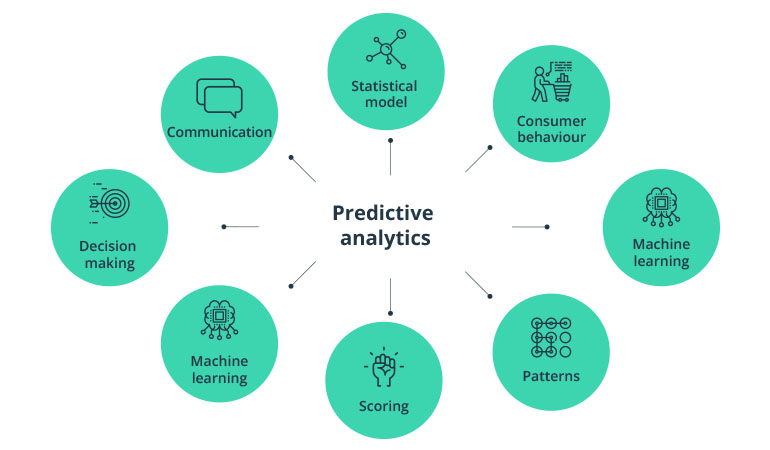
Conclusion
Demand forecasting in retail includes a variety of complex analytical approaches. Different predictive models can be used depending on the business case and the company’s needs. This elevates the role of data scientists, machine learning experts, and AI developers within the fashion and retail industries, as they can translate business needs into business intelligence by picking the right predictive algorithms and implementing them throughout the entire supply chain.
Just as customers’ tastes and styles differ, there’s no universal predictive model that fits all retail companies. That’s why each unique case requires appropriate data sets, a custom forecasting algorithm, and advice on how to implement it.
Contact Intellias retail experts to get advice on implementing AI and machine learning. As a trusted software development services company, Intellias will help you meet your unique business needs.

